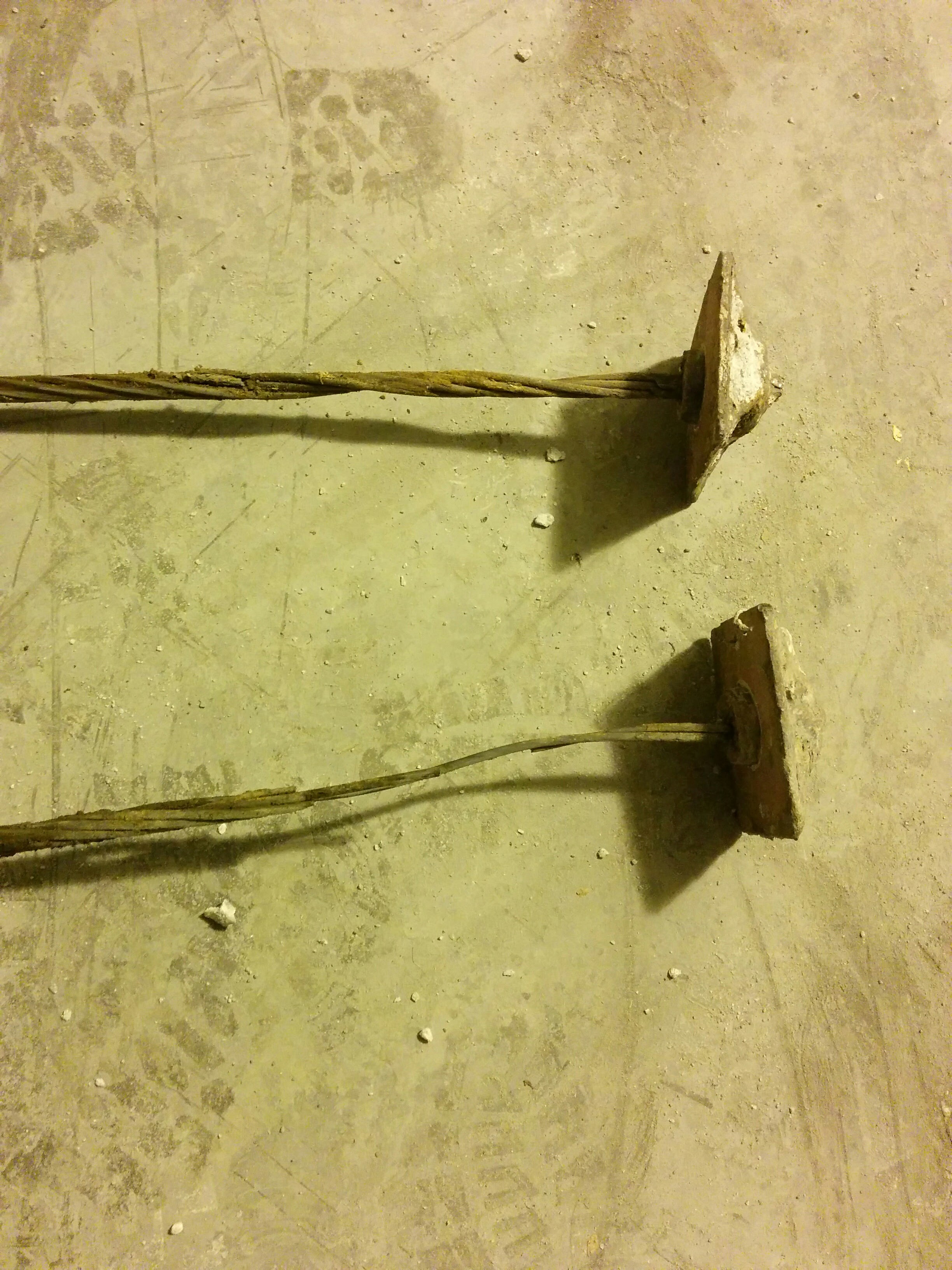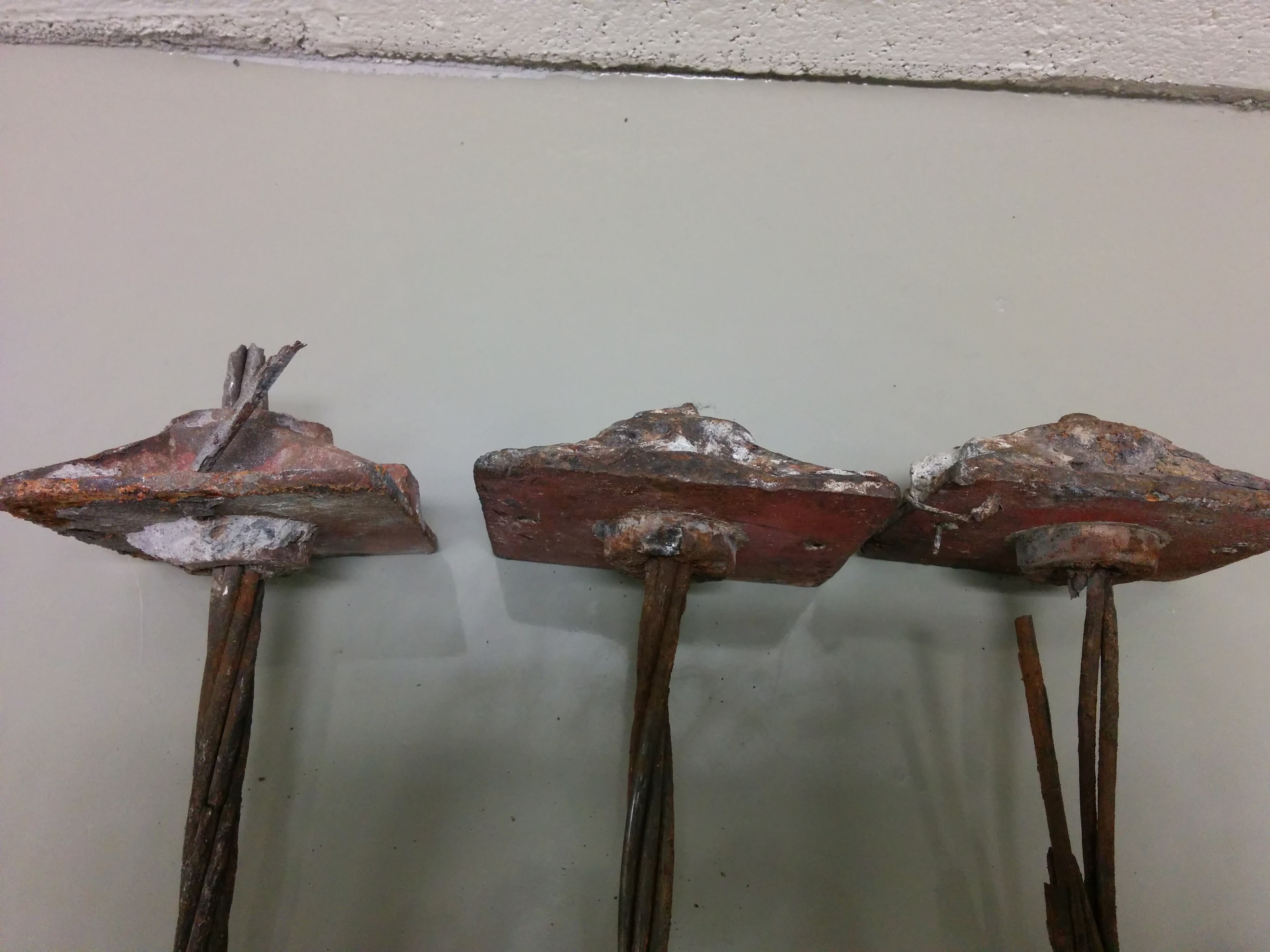Unlike conventionally reinforced concrete, post-tensioned concrete uses ultra high-strength steel manufactured into multi-wire strands that are used to pre-load the structural member. While post-tensioned structures have benefits such as reduced cracking, thinner slabs and longer spans between columns, they come with unique challenges for repair and maintenance.

Understanding the risks involved with post-tensioned concrete is critical for building health. Proper precautions are needed when drilling, coring or repairing the concrete slabs. Incidental damage to post-tensioned strands can be costly and disruptive to repair.
How do you know if your building is post-tensioned? Features like thin slabs, long spans and grout plugs at the slab edges can indicate post-tensioned concrete. Design drawings will also show the type of reinforcing used and can show the strand layout for each slab. When in doubt, call your Engineer.

As post-tensioned structures age, regular inspections are important to detect under-stressed or broken strands. Inspections include exposing the strands and checking the tension of each wire. Low tension can indicate a broken wire or slippage and an anchor.

During repairs of existing post-tensioned structures, there can be many concealed conditions and unforeseen issues resulting in high costs and schedule delays. A thorough understanding of the various types of post-tensioned systems can help mitigate this risk. Depending on the age, type and condition of the post-tensioned tendons, repairs can range from localized splice repairs to full tendon replacement. Repairs to post-tensioned concrete requires contractors with specialized training.

Implementing a monitoring strategy, understanding the risks, and working with specialists are critical success factors to maintain the health of your post-tensioned structure.

For more information on Edison’s Post-Tension services, contact Jordan Vandervelde at jvandervelde@edisonengineers.ca.


